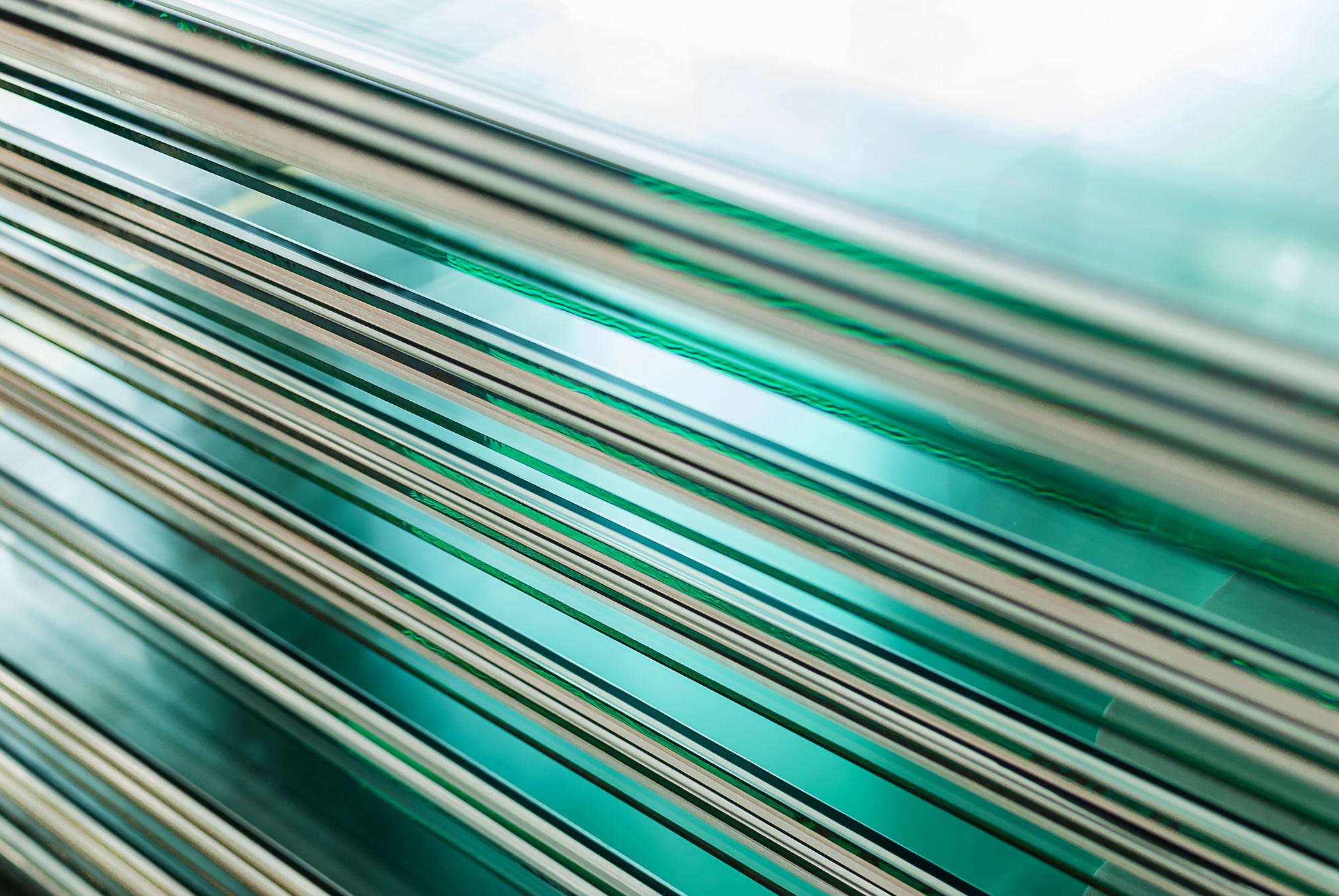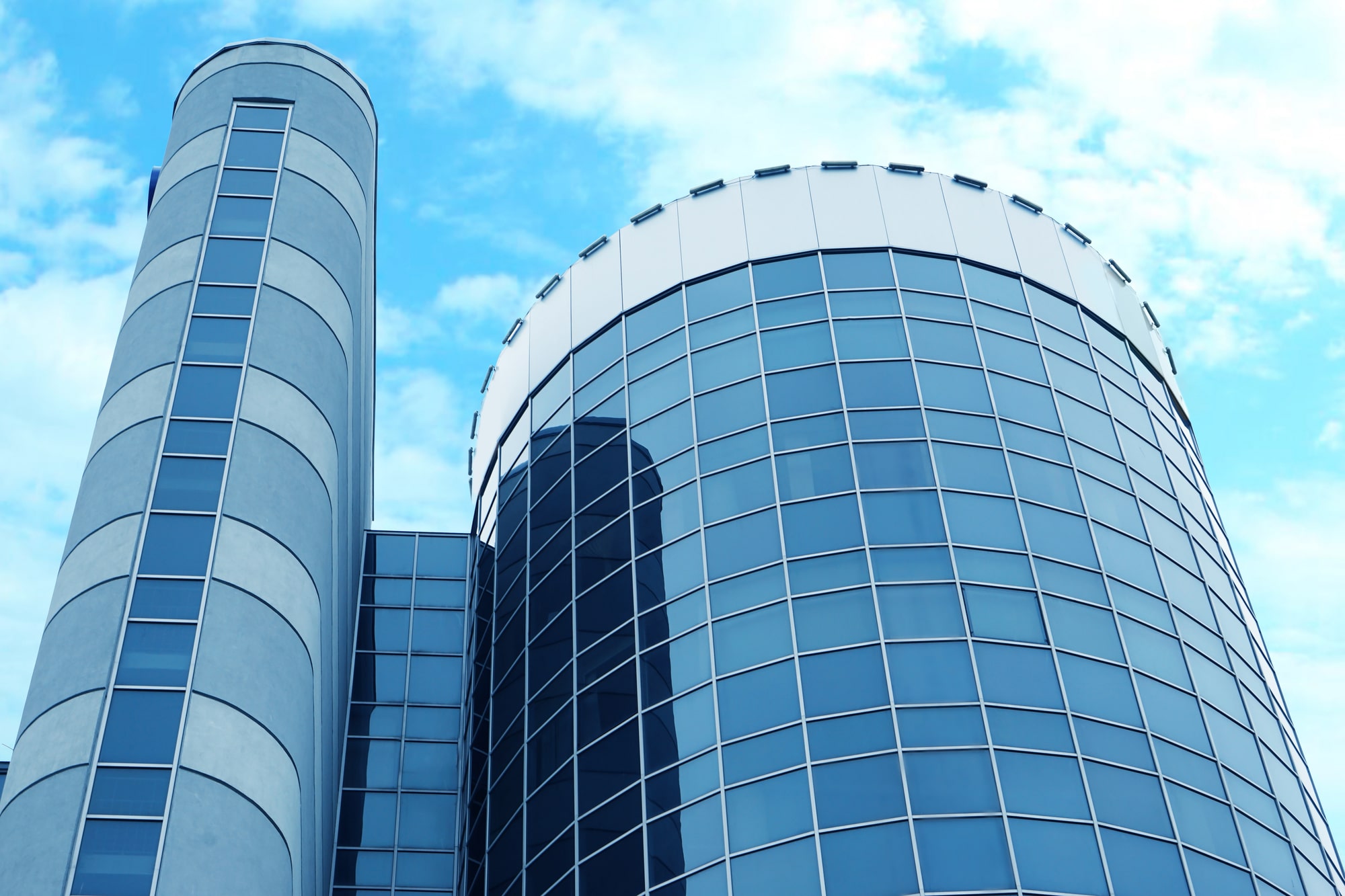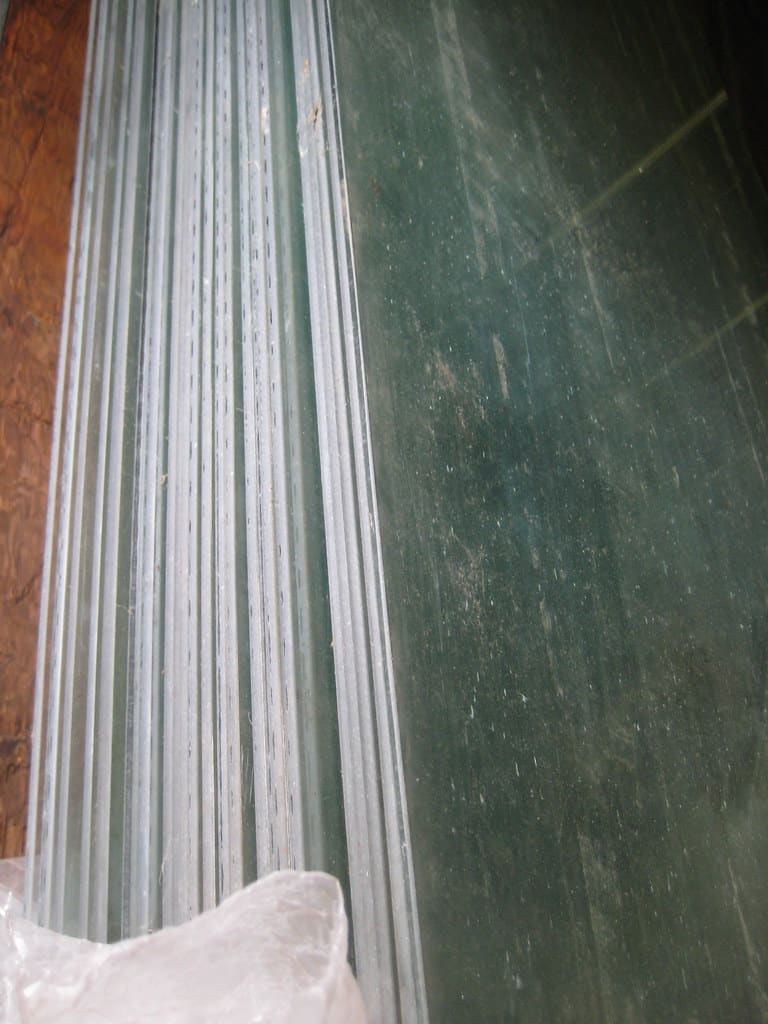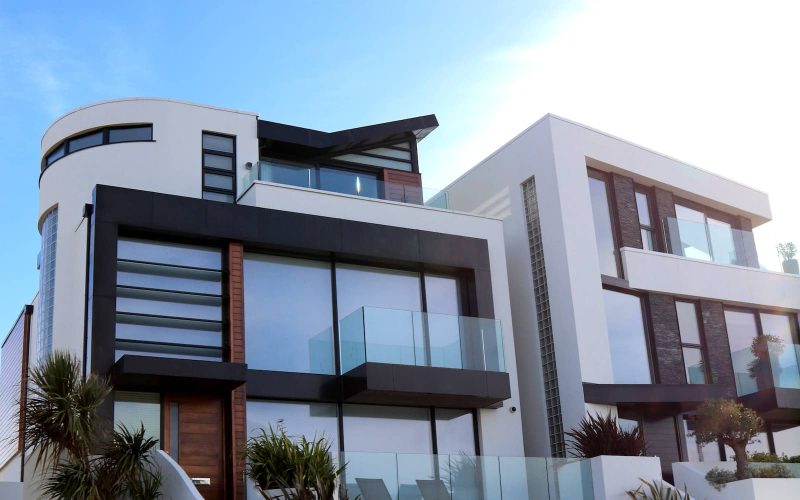With its inherent transparency and durability, glass has been a fundamental material in architectural designs for ages.
Technological advances have enhanced its properties, making it more adaptable and functional.
Many types of glasses are available for construction today, each offering a distinct advantage based on its composition and manufacturing technique.
This article delves into 20 types of glass for construction, highlighting their characteristics and applications.
1. Float Glass

The base for many types of glass, float glass derives its name from its production, wherein molten glass floats on the molten tin to achieve a flat, uniform sheet.
It’s transparent, smooth, and offers consistent quality. Also, its primary uses involve being turned into other types of glasses, but on its own, it’s widely used in windows and shelves.
The float glass process revolutionized glass production, ensuring consistency, clarity, and even thickness.
Thus, it’s a fundamental resource in modern construction.
2. Tinted Glass

Besides aesthetic appeal, tinted glass has metal oxides, granting it solar radiation filtering properties.
Tinted glass reduces the sun’s glare and heat, making interiors cooler and more comfortable.
Different metal oxides also produce varying hues; for instance, iron oxides produce a green or bronze tint.
Additionally, they reduce the fading of interior furnishings from UV radiation. Their application extends to facades, windows, and even vehicles.
3. Tempered Glass

Next on our list of types of glass for construction is tempered glass.
Also termed toughened glass, tempered glass undergoes controlled thermal or chemical treatments to enhance its strength.
It’s resilient against breaking and, if it does, shatters into granular chunks, minimizing injury risks.
It’s used in areas demanding safety, like shower doors, vehicle windows, and facades.
Also, the tempering process ensures it withstands pressure and temperature fluctuations and impacts better than ordinary glass.
4. Laminated Glass
Safety is paramount with laminated glass. Comprising two or more glass layers bonded with an interlayer, typically PVB, even if broken, it remains intact.
It provides sound insulation and UV radiation filtering and is burglar-resistant.
Commonly used in skylights, storefronts, and curtain walls, its safety attributes make it a preferred choice in seismic zones.
5. Insulated Glass
Energy efficiency is a highlight of insulated glass. Made of multiple glass panes separated by a vacuum or gas-filled space, it inhibits heat transfer.
This results in reduced heating or cooling costs, making buildings eco-friendly.
Besides thermal insulation, it offers soundproofing. Therefore, it’s ideal for the exteriors of residential and commercial buildings.
6. Low-E Glass
Among the types of glass for construction is Low E-glass. Low-emissivity (Low-E) glass boasts a microscopically thin, transparent coating reflecting infrared energy (heat).
At the same time, it allows visible light to pass. It ensures rooms remain warm during winters and cool during summers.
Strategically placed layers can improve a building’s heating and cooling demands. Thus, it provides year-round comfort and energy savings.
7. Reflective Glass
Coated with a metallic layer, reflective glass offers aesthetic appeal and functionality.
By reflecting a portion of incoming light, it controls glare and heat, ensuring interior comfort.
Its mirror-like appearance also ensures privacy, making it a favorite for skyscrapers and commercial towers.
8. Patterned Glass
With imprinted patterns on its surface, patterned glass balances aesthetics with privacy.
The designs are embedded during the rolling process, offering diverse aesthetics, from geometric to organic forms.
This glass diffuses light, granting privacy without compromising luminosity. Further, it is apt for bathrooms and decorative partitions.
9. Wired Glass
Wire glass is also among the types of glass for construction.
The wire mesh within it makes wired glass a safety-oriented choice, particularly concerning fire.
Though not as strong as tempered glass, the mesh ensures that the glass remains in place even when shattered.
This blocks flames and smoke, making it ideal for building safety zones.
10. Self-Cleaning Glass
A boon for high-rise structures, self-cleaning glass incorporates a photocatalytic layer.
UV rays activate this layer, breaking down dirt, which rain then washes away.
It minimizes maintenance efforts, making it a favorite for hard-to-reach exterior windows.
11. Bulletproof Glass
Multiple layers of glass and interlayers give bulletproof glass its strength. Upon impact, these layers absorb energy, preventing penetration.
Also, its thickness and composition vary based on threat levels when used in military vehicles, banks, and other high-security areas.
12. Acoustic Glass
Next on our list of the types of glass for construction is acoustic glass. Noise pollution finds its match in the acoustic glass.
Utilizing specialized interlayers it disrupts sound waves, providing superior sound insulation.
It is ideal for buildings near busy streets or airports and ensures serene interiors despite external cacophony.
13. Switchable Smart Glass
Modern technology gifts us a switchable smart glass, which transitions from transparent to translucent via an electric switch.
Liquid crystal molecules realign to achieve this effect. Hence, it grants privacy on demand.
They’re perfect for conference rooms and contemporary homes.
14. Solar Control Glass
A special coating allows solar control glass to reflect the sun’s infrared rays, ensuring interiors remain cool.
Regulating the amount of solar heat entering the building significantly reduces cooling costs, championing sustainable architecture.
15. Obscured Glass
Offering optimum light with privacy, obscured glass undergoes treatments like frosting or etching.
Its transparency ensures clear outlines are obscured, making it apt for private spaces or areas demanding diffused light.
16. Fire-Rated Glass
Fire-rated glass is among the types of glass for construction. Engineered to resist flames, fire-rated glass compartmentalizes fire, allowing safe evacuation and minimizing property damage.
It also ensures high temperatures, protecting occupants by acting as a shield against fire and toxic fumes.
17. Spandrel Glass
Architectural aesthetics often demand hiding features like floors or columns.
Spandrel glass, opaque due to ceramic frit or enamels, seamlessly integrates with the building’s facade. And this offers insulation and aesthetics.
18. Heat-Strengthened Glass
Twice as strong as annealed glass, heat-strengthened glass is not as robust as tempered glass.
Its resistance to thermal stress makes it suitable for glazing or as curtain walls where additional strength is needed.
19. Chemically-Strengthened Glass
A salt bath immersion strengthens glass at the molecular level, making it resistant to scratches and impacts.
Though appearing like regular glass, its strength and resilience make it a favored choice in demanding applications.
20. Decorative Glass
The last on our list of types of glass for construction is decorative glass. Beyond utility, glass also adds artistic flair.
Decorative glass, achieved via techniques like enameling, staining, or etching, transforms spaces, infusing them with character and style.
Conclusion
The versatility of glass types aligns with diverse architectural demands, making it an indispensable material in construction.
However, the choice determines aesthetics and the building’s safety, energy efficiency, and comfort levels.








